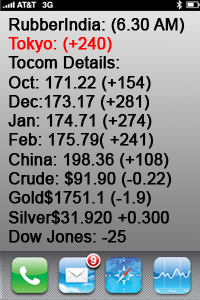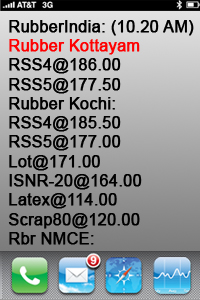June 16, 2025
Rubber India
Overview
Today, Japanese rubber futures are trading within a narrow range as traders assess the impact of weakening demand in China against supply concerns due to heavy rainfall in production areas.
Current Prices
Osaka Exchange (OSE):
November rubber contract: 292 yen ($2.02) per kg, down 0.2 yen (0.07%).
Shanghai Futures Exchange (SHFE):
September rubber contract: 13,900 yuan ($1,934.88) per metric ton, up 85 yuan (0.62%).
July butadiene rubber contract: 11,495 yuan ($1,600.11) per metric ton, up 180 yuan (1.59%).
Singapore Exchange (SICOM):
July rubber contract: 161.7 U.S. cents per kg, unchanged.
Demand and Supply Dynamics
Demand Concerns: The demand for rubber, especially from tyre manufacturers in China, is currently weak. This slowdown is typical during the off-season, leading to reduced enthusiasm for purchasing raw materials.
Supply Issues: Recent rainfall in key rubber-producing regions, specifically Hainan and Yunnan, has disrupted rubber tapping. This disruption raises concerns about future supply availability. Additionally, tropical storm Wutip has caused heavy rains and strong winds in southern China, further impacting production.
Market Sentiment
Traders are closely monitoring the balance between supply and demand. Many are hopeful for a recovery in demand, especially if uncertainties related to tariffs and geopolitical tensions ease. Currently, the capacity utilization rate for full-steel tyre companies stands at 61.22%, a decrease of 2.23 percentage points from the previous week.
Trade Talks
Japanese Prime Minister Shigeru Ishiba is set to discuss trade issues with U.S. President Donald Trump, aiming to persuade him to reconsider tariffs that threaten Japan’s automotive industry. This dialogue could have indirect effects on rubber demand if tariffs are lifted.
Conclusion
The rubber market remains uncertain and directionless as traders await clearer signals regarding supply stability and demand recovery. Until more information is available, prices are likely to remain within a limited range.



